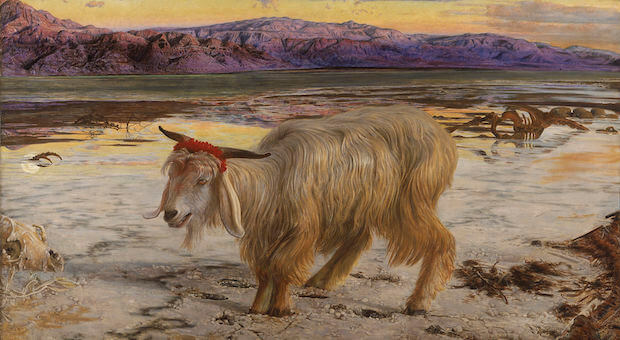Yom Kippur, the Day of Atonement described in Leviticus 16, is a central element of the Jewish faith, even though it is not practiced today as it was in ancient times. Although many Christians have heard of the day, most would be startled to learn that a sinister figure lurks in the shadows of Leviticus 16.
The Day of Atonement ritual required a ram, a bull, and two goats (Lev 16:3–5). The ram was for a burnt offering intended to please God (Lev 16:3–4). The bull, taken “from the herd,” served as a sin offering for Aaron, the high priest, and his family. In this case, the sin offering restored the priest to ritual purity, allowing him to occupy sacred space and be near God’s presence. Curiously, two goats taken “from the congregation” were needed for the single sin offering for the people (Lev 16:5). Elsewhere the sin offering involved only one animal (e.g., Lev 4:1–12). So why two goats?
The high priest would cast lots over the two goats, with one chosen as a sacrifice “for the Lord” (Lev 16:8). The blood of that goat would purify the people. The second goat was not sacrificed or designated “for the Lord.” On the contrary, this goat—the one that symbolically carried the sins away from the camp of Israel into the wilderness—was “for Azazel” (Lev 16:8–10).
What—or who—is Azazel?
The Hebrew term azazel (עזאזל) occurs four times in Leviticus 16 but nowhere else in the Bible. Many translations prefer to translate the term as a phrase, “the goat that goes away,” which is the same idea conveyed in the King James Version’s “scapegoat.” Other translations treat the word as a name: Azazel. The “scapegoat” option is possible, but since the phrase “for Azazel” parallels the phrase “for Yahweh” (“for the Lord”), the wording suggests that two divine figures are being contrasted by the two goats.
A strong case can be made for translating the term as the name Azazel. Ancient Jewish texts show that Azazel was understood as a demonic figure associated with the wilderness. The Mishnah (ca. ad 200; Yoma 6:6) records that the goat for Azazel was led to a cliff and pushed over, ensuring it would die and not return. This association of the wilderness with evil is also evident in the New Testament, as this was where Jesus met the devil (Matt 4:1). Also, in Leviticus 17:1–7 we learn that some Israelites had been accustomed to sacrificing offerings to “goat demons.” The Day of Atonement replaced this illegitimate practice.
The second goat was not sent into the wilderness as a sacrifice to a foreign god or demon. The act of sending the live goat out into the wilderness, which was unholy ground, was to send the sins of the people where they belonged—to the demonic domain. With one goat sacrificed to bring purification and access to God and one goat sent to carry the people’s sins to the demonic domain, this annual ritual reinforced the identity of the true God and His mercy and holiness.
When Jesus dies on the cross for all of humanity’s sins, he is crucified outside the city, paralleling the sins of the people being cast to the wilderness via the goat to Azazel. Jesus dies once for all sinners, negating the need for this ritual.

This article is excerpted from Dr. Heiser’s book I Dare You Not to Bore Me with the Bible.
Get free Bible software from Logos!
Compare translations, take notes and highlight, consult devotionals and commentaries, look up Greek and Hebrew words, and much more—all with the help of intuitive, interactive tools.






